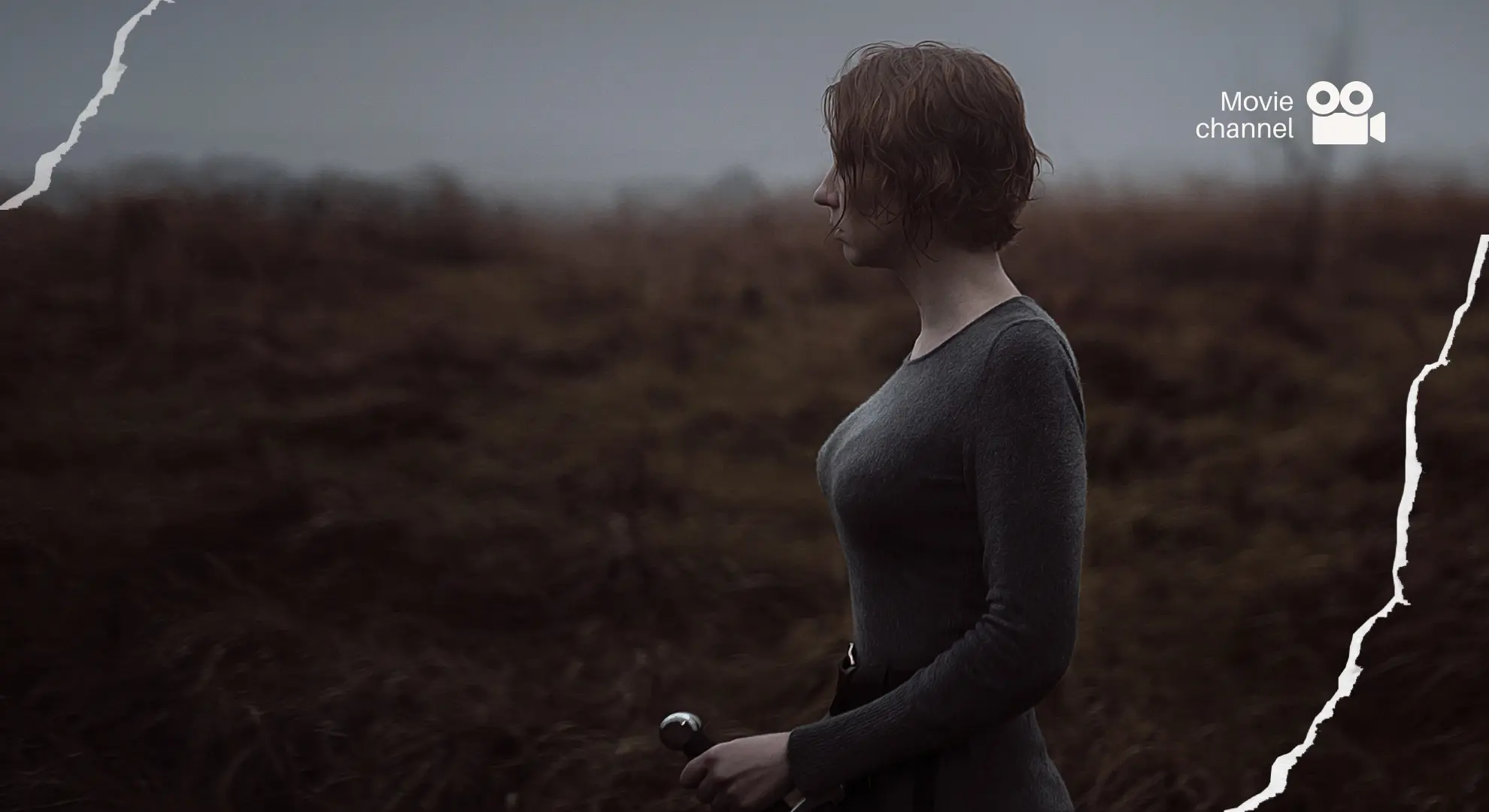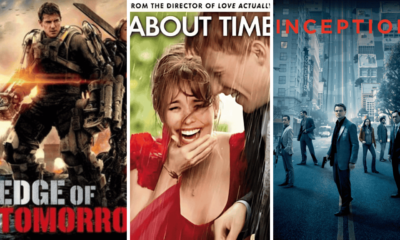Entertainment
What Is the Most Reliable Movie Rating Site?


Introduction to Movie Rating Sites
Movie rating sites have become an indispensable tool for movie enthusiasts worldwide. These platforms serve as a comprehensive guide, enabling viewers to make informed decisions about which films to watch. In an era where the volume of available content is overwhelming, reliable movie rating sites help streamline the viewing experience by offering insights into the quality and appeal of various movies.
The rise of streaming services and digital distribution has led to an exponential increase in the number of films accessible to the average consumer. Consequently, the number of movie rating sites has also surged, each vying to provide the most accurate and trustworthy ratings. These websites compile reviews, ratings, and feedback from both critics and the general public, offering a balanced perspective on a film’s reception.
For many moviegoers, the reliability of these platforms is crucial. Trustworthy movie rating sites can significantly influence a viewer’s choices, ensuring that their time and money are well spent. By aggregating data from diverse sources, these sites offer a comprehensive overview that can help mitigate the risk of selecting a disappointing film. As such, the demand for reliable and credible movie rating sites continues to grow.
Finding the most reliable movie rating site is not just about accuracy but also about the depth of information provided. A dependable site typically offers a blend of quantitative ratings and qualitative reviews, covering various aspects of a film such as acting, direction, and screenplay. This holistic approach enables users to gauge a movie’s potential enjoyment factor more effectively.
In summary, the proliferation of movie rating sites reflects the growing need for guidance in the vast landscape of cinematic offerings. As viewers seek out the most reliable movie rating site, they look for platforms that provide consistent, unbiased, and well-rounded evaluations, helping them make the best possible choices for their viewing pleasure.
Criteria for Reliability in Movie Rating Sites
Determining the most reliable movie rating site involves evaluating several crucial factors. One of the primary criteria is the transparency of the rating process. A reliable movie rating site should clearly outline how ratings are calculated and what criteria are considered. For instance, Rotten Tomatoes provides a detailed explanation of their Tomatometer and Audience Score, ensuring users understand how reviews are aggregated.
Another significant factor is the diversity of reviewers. A trustworthy platform should feature a wide range of perspectives, including professional critics and general audiences from various backgrounds. IMDb excels in this aspect by allowing users worldwide to contribute their reviews, thereby presenting a more comprehensive picture of a movie’s reception.
The balance between critic and user reviews is also vital. Sites like Metacritic not only aggregate scores from esteemed critics but also include user scores, offering a dual perspective. This balance helps in providing a more rounded view of a movie’s quality, satisfying both cinephiles and casual viewers.
Historical accuracy of ratings plays a crucial role in assessing reliability. A site that maintains consistent and accurate ratings over time builds trust among its users. For example, RogerEbert.com has a long-standing reputation for its consistent and thoughtful critiques, making it a go-to resource for many film enthusiasts.
Finally, the overall credibility of the platform cannot be overlooked. This encompasses not only the site’s reputation but also its editorial standards, the expertise of its reviewers, and its commitment to impartiality. Platforms like Letterboxd, although newer, have quickly established credibility due to their community-driven approach and the quality of user-generated content.
By considering these criteria, users can better identify what is the most reliable movie rating site, ensuring they receive trustworthy and balanced movie assessments.
Overview of Popular Movie Rating Sites
When considering what is the most reliable movie rating site, several platforms come to mind, each offering unique features and perspectives on film evaluation. Among the leading sites are IMDb, Rotten Tomatoes, Metacritic, and Letterboxd. These platforms have garnered significant user bases and provide both critic and user-generated ratings, catering to diverse preferences and needs.
IMDb (Internet Movie Database) is one of the most well-known and widely used movie rating sites. It offers a comprehensive database of films, television shows, and other media content. IMDb ratings are primarily user-generated, allowing millions of viewers worldwide to cast their votes on various titles. This extensive user participation offers a broad perspective on a movie’s popularity and reception among the general audience.
Rotten Tomatoes distinguishes itself by aggregating reviews from professional critics alongside user ratings. The site provides two key metrics: the Tomatometer score, which reflects the percentage of positive reviews from professional critics, and the Audience Score, which represents user ratings. This dual approach allows users to consider both expert opinions and general audience sentiments, offering a balanced view of a film’s reception.
Metacritic specializes in collecting and averaging reviews from professional critics. It assigns a weighted score, known as the Metascore, which ranges from 0 to 100. This score is based on a normalized average of all included reviews, providing a consolidated critic opinion. Metacritic also includes user ratings, but its primary focus remains on professional critical analysis, making it a valuable resource for those seeking expert evaluations.
Letterboxd is a social platform for film enthusiasts, where users can rate, review, and discuss movies. Unlike the other sites, Letterboxd emphasizes community interaction and personal review sharing. While it does not feature professional critic scores, its user-generated reviews and ratings create a vibrant and engaged community of movie lovers who share their insights and recommendations.
Each of these movie rating sites offers a unique approach to evaluating films, catering to different audiences and preferences. Understanding their distinct features can help users determine which platform aligns best with their needs for reliable movie ratings.
In-Depth Analysis of IMDb
IMDb, the Internet Movie Database, has long been regarded as a cornerstone in the realm of film ratings and information. Established in 1990, IMDb has grown exponentially to become one of the most comprehensive and reliable movie rating sites available. Its vast database includes information on millions of movies, TV shows, and celebrities, catering to a global audience.
The user base of IMDb is remarkably diverse, encompassing cinema enthusiasts, casual viewers, and industry professionals alike. This diverse demographic contributes to a robust and multifaceted perspective on film ratings. IMDb aggregates ratings through a weighted average system, which considers the quantity and consistency of user ratings to ensure a balanced representation. This methodology helps in providing a more accurate reflection of a movie’s reception among the general public.
One of IMDb’s significant strengths lies in its extensive database and user-generated content. The platform allows users to submit reviews, ratings, and even trivia, creating a rich repository of information that is continually updated. This user-generated content is invaluable for those seeking a comprehensive view of a film’s reception and background. Additionally, IMDb’s Top 250 list is frequently referenced as a benchmark for quality cinema, further solidifying its reputation as a reliable movie rating site.
However, despite its many strengths, IMDb is not without its weaknesses. One potential drawback is the influence of hype and marketing on its ratings. High-profile releases often see an initial surge in ratings, which can skew the perception of the film’s quality. Moreover, the sheer volume of user-generated content can sometimes lead to inconsistencies or biases in reviews and ratings. While IMDb’s weighted average system mitigates this to some extent, it is not entirely foolproof.
Overall, IMDb remains a highly reliable movie rating site, thanks to its extensive database, active user participation, and comprehensive rating system. However, users should remain aware of the potential for hype-driven ratings and seek a balanced view by consulting additional sources when making their film choices.
In-Depth Analysis of Rotten Tomatoes
Rotten Tomatoes, a prominent player in the movie rating landscape, offers a distinctive approach to film evaluation through its ‘Tomatometer’ and ‘Audience Score’. The ‘Tomatometer’ aggregates reviews from approved critics, assigning a percentage score based on the ratio of positive to negative reviews. Films receiving a score of 60% or higher are labeled ‘fresh’, whereas those falling below this threshold are deemed ‘rotten’. This binary classification simplifies consumer understanding of critical reception.
The ‘Audience Score’, on the other hand, reflects the average rating given by general viewers, providing a complementary perspective to the critic-driven ‘Tomatometer’. This dual scoring system allows for a more comprehensive understanding of a film’s reception, balancing professional critique with popular opinion.
One of Rotten Tomatoes’ key strengths lies in its clear critic consensus. Each film’s page includes a summary of the critics’ general opinion, offering users a succinct overview. This feature aids in quick decision-making for moviegoers. Moreover, the transparency of the review sources, with links to the original articles, enhances credibility and allows users to delve deeper into individual critiques.
However, the site is not without its weaknesses. One notable concern is potential bias. The selection of approved critics can skew the ‘Tomatometer’ towards certain viewpoints, potentially marginalizing diverse opinions. Furthermore, the pool of critics is often limited, predominantly featuring voices from major publications, which may not fully represent the broader spectrum of film criticism.
Despite these limitations, Rotten Tomatoes remains a widely respected and reliable movie rating site. Its methodical aggregation of reviews and the clear distinction between critic and audience feedback make it a valuable resource for discerning viewers. However, users should be mindful of its inherent biases and consider it as one of several tools in their movie selection process.
In-Depth Analysis of Metacritic
Metacritic is renowned for its comprehensive and methodical approach to movie ratings, making it a prominent contender when considering what is the most reliable movie rating site. Central to Metacritic’s rating system is its use of a weighted average, which is meticulously designed to balance critic reviews. This method aggregates scores from a diverse array of critics, each assigned varying weights based on their perceived credibility and influence in the film industry. As a result, the scores reflect a broad spectrum of critical opinions, thus providing a more nuanced and balanced assessment of a movie’s quality.
At the heart of Metacritic’s rating system is the ‘Metascore,’ a unique numerical score that ranges from 0 to 100. This score is calculated by converting each critic’s review into a standardized score, which is then weighted and averaged. The Metascore is designed to offer a quick, yet comprehensive snapshot of critical consensus, making it a valuable tool for moviegoers looking to make informed viewing choices. The higher the Metascore, the more favorable the critical reception, with scores above 80 generally indicating universal acclaim.
Metacritic also incorporates user reviews alongside critic reviews to provide a more holistic view of a movie’s reception. Users can submit their own ratings and reviews, which are displayed separately from critic scores. This dual approach allows for a comparison between professional critiques and public opinion, offering a well-rounded perspective. However, it’s important to note that user scores are not factored into the Metascore, which is solely derived from professional critic reviews. This separation helps maintain the integrity and reliability of the Metascore as an indicator of critical consensus.
While Metacritic strives for objectivity, potential biases can still emerge. The weighting system, though designed to balance varying critical voices, may inadvertently favor certain publications or critics. Additionally, the selection of critics included in the Metascore calculation can influence the overall score. Despite these potential biases, Metacritic’s methodical and transparent approach to aggregating critic reviews makes it a reliable resource for movie ratings, catering to both casual viewers and avid film enthusiasts seeking a trustworthy gauge of cinematic quality.
In-Depth Analysis of Letterboxd
Letterboxd has emerged as a popular platform for movie enthusiasts, distinguished by its robust social networking features and user-generated reviews. Unlike traditional movie rating sites, Letterboxd emphasizes community engagement, allowing users to connect, follow each other, and share their cinematic experiences. This community-driven approach significantly influences the reliability of its ratings, as they are aggregated from a diverse pool of individual perspectives rather than a select group of critics.
One of the platform’s standout features is the ability to create personal lists. Users can categorize movies into custom lists, such as “Top 10 Films of All Time” or “Best Horror Movies of the 21st Century,” which can be shared with the community. These lists not only foster a deeper engagement but also provide curated recommendations that might be absent on other rating sites. The option to keep a movie diary further enhances the user experience, enabling members to log and reflect on their viewing history, rate films, and write reviews.
The cultural impact of Letterboxd’s community is notable. The platform has cultivated a space where cinematic discussions thrive, often influencing broader conversations about films. Users can discover hidden gems or avoid overrated titles based on real-time feedback from a global audience. However, this crowd-sourced model can be a double-edged sword; while it democratizes movie ratings, it also introduces variability in review quality. The diverse user base means that ratings can sometimes be inconsistent, influenced by personal biases or trends.
Ultimately, Letterboxd is a unique and vibrant platform that offers a different perspective on movie ratings. Its reliance on user-generated content and social features makes it a valuable tool for discovering new films and engaging with a community of like-minded cinephiles. While the variability in user reviews can affect reliability, the platform’s cultural impact and distinctive features make it a noteworthy contender in answering what is the most reliable movie rating site.
Conclusion: Which Site Is the Most Reliable?
Having explored the strengths and weaknesses of various movie rating sites, it is evident that each platform offers unique advantages and caters to different user preferences. The accuracy and comprehensiveness of a rating site are fundamental to its reliability. In this context, Rotten Tomatoes stands out for its dual-rating system, which amalgamates both critics’ reviews and audience scores, providing a balanced perspective. However, some users find the aggregation methodology somewhat opaque.
On the other hand, IMDb offers an extensive database and a user-driven rating system, making it a go-to resource for many movie enthusiasts. Its strength lies in the sheer volume of user ratings, which can provide a broad consensus. Nevertheless, the lack of a clear distinction between professional critics and casual viewers may be a drawback for those seeking more discernment.
Metacritic excels in terms of transparency and analytical depth, as it aggregates critics’ reviews into a single metascore. This approach is particularly beneficial for users who prioritize expert opinions. However, its reliance on a smaller pool of critics can sometimes limit the diversity of perspectives.
For users who value community engagement and detailed reviews, Letterboxd offers a unique social platform for movie discussions and personalized recommendations. While it may not be the most traditional rating site, its emphasis on user interaction and film journaling is unparalleled.
In determining what is the most reliable movie rating site, the decision ultimately depends on individual needs. For those who seek a balanced view from both critics and the public, Rotten Tomatoes might be the optimal choice. If a large, diverse user base is more appealing, IMDb could be more suitable. For expert-driven scores, Metacritic is a reliable option. Lastly, for a more interactive and community-focused experience, Letterboxd stands out. Each site has its merits, and users should choose based on their specific preferences and viewing habits.
Entertainment
The 15 Best Tom Hardy Movies, Ranked

Introduction to Tom Hardy’s Stellar Career
Tom Hardy has established himself as one of the finest actors of his generation. With an impressive range of roles and undeniable charisma, he has captivated audiences worldwide. In this blog post, we will explore the 15 best Tom Hardy movies, ranked for your viewing pleasure.
1. Inception (2010)
Directed by Christopher Nolan, ‘Inception’ is a mind-bending thriller that showcases Hardy’s talent in the role of Eames, a charming forger. His performance adds a layer of sophistication and wit to the complex narrative, making it one of his standout roles.
2. Mad Max: Fury Road (2015)
In ‘Mad Max: Fury Road,’ Tom Hardy takes on the iconic role of Max Rockatansky. His intense and brooding portrayal of the character breathes new life into the franchise, earning him critical acclaim and solidifying his status as an action star.
3. The Dark Knight Rises (2012)
Hardy’s portrayal of Bane in ‘The Dark Knight Rises’ is nothing short of spectacular. He brings a menacing presence and physicality to the role, making Bane one of the most memorable villains in the Batman series.
4. Locke (2013)
‘Locke’ is a unique film that features Hardy as the sole on-screen character. His riveting performance in this minimalist drama showcases his ability to carry a film with nothing but his voice and expressions.
5. Warrior (2011)
In ‘Warrior,’ Hardy plays Tommy Riordan, a former Marine turned mixed martial arts fighter. His powerful performance, combined with intense physicality, makes this film a must-watch for fans of sports dramas.
6. Bronson (2008)
Hardy’s portrayal of the notorious British criminal Charles Bronson is both captivating and disturbing. His transformation into the character is a testament to his dedication and acting prowess.
7. Dunkirk (2017)
Directed by Christopher Nolan, ‘Dunkirk’ features Hardy in a supporting role as a Spitfire pilot. Despite limited screen time, his performance is impactful and adds to the film’s gripping narrative.
8. The Revenant (2015)
In ‘The Revenant,’ Hardy plays the role of John Fitzgerald, a hardened frontiersman. His intense and ruthless portrayal earned him an Academy Award nomination for Best Supporting Actor.
9. Legend (2015)
‘Legend’ sees Hardy playing dual roles as the infamous Kray twins. His ability to distinguish between the two characters with nuanced performances is truly impressive.
10. Venom (2018)
Hardy’s portrayal of Eddie Brock and the titular anti-hero in ‘Venom’ is both entertaining and engaging. His performance brings a unique blend of humor and intensity to the character.
11. Tinker Tailor Soldier Spy (2011)
In this espionage thriller, Hardy plays the role of Ricki Tarr, an MI6 agent. His performance is subtle yet impactful, adding depth to the film’s intricate plot.
12. Lawless (2012)
‘Lawless’ features Hardy as Forrest Bondurant, a bootlegger during the Prohibition era. His commanding presence and nuanced performance make him a standout in the ensemble cast.
13. The Drop (2014)
In ‘The Drop,’ Hardy plays Bob Saginowski, a quiet bartender with a dark past. His understated performance adds layers to the film’s gritty narrative.
14. RocknRolla (2008)
Directed by Guy Ritchie, ‘RocknRolla’ features Hardy as Handsome Bob, a member of a criminal gang. His charming and charismatic performance adds a touch of humor to the film.
15. This Means War (2012)
In ‘This Means War,’ Hardy displays his comedic chops as Tuck, a CIA agent caught in a love triangle. His chemistry with co-stars Chris Pine and Reese Witherspoon makes this romantic comedy a fun watch.
Conclusion
From intense dramas to action-packed blockbusters, Tom Hardy has proven his versatility and talent time and again. These 15 best Tom Hardy movies, ranked, offer a glimpse into his remarkable career and showcase why he is one of Hollywood’s most revered actors.
Entertainment
How to Be a Movie Star: Your Ultimate Guide to Fame and Success

In the glamorous world of cinema, the allure of becoming a movie star captivates the imaginations of countless individuals. The dream of walking the red carpet, receiving prestigious awards, and being recognized globally is undeniably enticing. However, the journey to stardom is not merely a path paved with glitz and glamour; it demands relentless hard work, unwavering dedication, and an indomitable spirit. To be a movie star is to embrace a lifestyle that intertwines creative fulfillment with public scrutiny, where the rewards are immense but the challenges equally daunting.
Becoming a movie star means stepping into a realm where talent meets opportunity, and passion drives perseverance. It is an endeavor that requires not only acting prowess but also a deep understanding of the industry, networking acumen, and a strategic approach to career development. This guide aims to illuminate the multifaceted journey of how to be a movie star, providing aspiring actors with comprehensive insights and actionable steps. From honing one’s craft and navigating auditions to building a personal brand and understanding the intricacies of the film industry, each aspect plays a critical role in achieving cinematic success.
Throughout this article, we will explore the essential steps that pave the way to stardom, offering practical tips and expert advice to help you realize your dreams. Whether you are just beginning your acting career or seeking to elevate your existing skills, understanding the demands and opportunities of the industry is paramount. We will delve into the importance of continuous learning, the significance of networking, and the strategies for maintaining a resilient mindset amidst the highs and lows of showbiz. By the end of this guide, you will be equipped with the knowledge and inspiration needed to embark on your journey to becoming a celebrated movie star.
Understanding the Industry
The film industry is a complex and multifaceted arena, comprising various key players who each play a crucial role in the creation and success of a movie. Aspiring actors aiming to become a movie star must understand the roles of directors, producers, casting agents, and talent agencies. Directors are responsible for the overall vision of the film, guiding actors in their performances and coordinating with other departments. Producers handle the business aspects, such as financing, scheduling, and marketing. Casting agents are pivotal in selecting the right actors for roles, while talent agencies represent actors, helping them secure auditions and negotiate contracts.
Networking and relationship-building are indispensable in this industry. Establishing connections with industry professionals can open doors to auditions and roles that might otherwise remain inaccessible. Attending industry events, participating in workshops, and joining professional organizations are effective ways to expand one’s network. Aspiring actors should also consider creating an online presence through social media platforms and professional websites to increase their visibility.
The film industry encompasses a wide array of genres and roles, from drama and comedy to action, horror, and science fiction. Each genre demands different skills and techniques, so it’s essential for actors to identify their strengths and find their niche. Specializing in a particular genre or type of role can help actors stand out and become more marketable. For example, an actor with a knack for comedy might focus on comedic roles, while someone with a talent for intense, emotional performances might gravitate towards drama.
For those seeking more in-depth knowledge of the film industry, numerous resources are available. Websites like IMDb and industry publications such as The Hollywood Reporter and Variety offer valuable insights into current trends, key players, and upcoming projects. Books like “An Actor Prepares” by Constantin Stanislavski and “The Film Actor’s Handbook” by David Holt are also excellent resources for understanding the art and business of acting.
Essential Skills and Training
Becoming a successful movie star requires a diverse set of skills and rigorous training. At the core, acting techniques form the foundation of any actor’s craft. Mastery of different acting methods, such as Stanislavski’s system, Meisner technique, and Method acting, enables actors to portray characters authentically and convincingly. Voice modulation is equally critical, allowing actors to convey a wide range of emotions and adapt to various roles. This skill involves controlling pitch, tone, and volume to match the character’s persona and the scene’s requirements.
Body language is another crucial element in an actor’s toolkit. Effective use of gestures, posture, and facial expressions can significantly enhance performance, making characters more believable and relatable. Emotional expression, the ability to evoke genuine feelings, is perhaps the most challenging yet vital skill. Actors must tap into their own emotions to bring a character to life, whether it’s joy, sorrow, anger, or fear.
Formal training plays an indispensable role in honing these skills. Acting classes, workshops, and drama schools provide structured environments for learning and practice. Renowned institutions such as the Juilliard School, the American Academy of Dramatic Arts, and the Royal Academy of Dramatic Art offer comprehensive programs that cover various aspects of acting. For those seeking flexibility, online resources like MasterClass, Coursera, and Udemy provide courses taught by industry professionals, allowing aspiring actors to learn at their own pace.
Continuous learning and self-improvement are essential for those looking to understand how to be a movie star. The entertainment industry is ever-evolving, and staying updated with new techniques and trends can give actors a competitive edge. Regularly attending workshops, seeking feedback, and practicing diligently can lead to substantial growth. Additionally, studying performances of successful actors can provide valuable insights and inspiration. In the journey to becoming a movie star, dedication to skill development and training is paramount.
Building Your Portfolio
Creating a strong portfolio is a fundamental step in the journey of how to be a movie star. A well-crafted portfolio serves as your professional calling card, showcasing your talent, versatility, and dedication to potential casting directors and agents. To start, invest in a professional headshot. This image is often the first impression you make, so it should capture your personality and look. Opt for a high-quality photograph taken by an experienced photographer who specializes in headshots for actors.
Your resume is another critical component. It should be concise, clear, and highlight your acting experience, training, and any special skills that set you apart. Include relevant details such as the names of projects, your roles, directors, and production companies. Remember to update your resume regularly to reflect new experiences and accomplishments.
A demo reel is essential for showcasing your acting range. It should include clips from your best performances, ideally spanning different genres and character types. Keep it brief, around 2-3 minutes, to maintain the viewer’s interest. Quality over quantity is key; select scenes that demonstrate your strongest work.
In today’s digital age, leveraging social media and personal websites is crucial for self-promotion. Platforms like Instagram, Twitter, and LinkedIn allow you to share your journey, engage with fans, and network with industry professionals. A personal website acts as a centralized hub for your portfolio, featuring your headshot, resume, demo reel, and contact information. Ensure your site is user-friendly and visually appealing.
For inspiration, consider looking at successful actor portfolios. Notable examples include the portfolios of actors like Brie Larson and Chadwick Boseman, which effectively highlight their diverse skills and career milestones. Remember, a compelling portfolio is a blend of professionalism and authenticity, reflecting who you are and what you bring to the table in the competitive world of acting.
Auditioning and Landing Roles
Auditioning is a critical step in the journey of how to be a movie star. Preparation is key, and it begins with thorough research. Understanding the role you are auditioning for is essential. Dive deep into the character’s background, motivations, and relationships. This understanding will allow you to bring authenticity and depth to your performance.
Equally important is familiarizing yourself with the script. Read it multiple times to grasp the nuances and subtext. Practice your lines diligently, ensuring you can deliver them naturally and with emotion. Recording yourself and watching the playback can be incredibly helpful in refining your performance.
The audition process itself can vary. Open calls are common for larger projects, allowing anyone to audition. For these, be prepared to wait and perform in front of numerous other hopefuls. If you make it past the initial round, you may be called back for a more in-depth audition. These callbacks are more focused and often involve reading with other actors or performing additional scenes.
Making a lasting impression during an audition is crucial. Dress appropriately for the role while maintaining a level of professionalism. Your appearance should suggest the character without being a full costume unless specifically requested. Confidence is your best ally. Walk into the room with poise, make eye contact, and introduce yourself clearly. Remember, casting directors are looking for talent and someone who is easy to work with.
For those serious about how to be a movie star, utilizing online resources can be beneficial. Websites like Backstage, Casting Networks, and Actors Access are excellent platforms to find audition opportunities. These sites often provide valuable information on upcoming auditions, industry advice, and additional resources to help you succeed.
By approaching auditions with preparation, confidence, and a strategic use of resources, you can increase your chances of landing that coveted role and taking a significant step towards becoming a movie star.
Navigating Contracts and Legalities
Understanding the intricacies of acting contracts is a fundamental step in learning how to be a movie star. At the core of any acting career are contracts that outline the terms and conditions under which an actor works. These documents typically cover aspects such as payment, duration of employment, and the specific duties expected of the actor. Additionally, they often include clauses related to exclusivity, confidentiality, and intellectual property rights. Familiarizing oneself with these key terms is essential for anyone aspiring to navigate the complex world of the film industry.
One of the most critical components in this process is having a competent agent or legal advisor. These professionals play a crucial role in reviewing contracts to ensure that the terms are fair and in the actor’s best interest. They are skilled in identifying potential pitfalls, such as ambiguous language that could lead to disputes, or unfavorable exclusivity clauses that could limit future opportunities. By having a knowledgeable representative, actors can protect their rights and negotiate better terms, thereby enhancing their career prospects and financial security.
Common pitfalls in acting contracts include clauses that may restrict an actor’s ability to work on other projects, or terms that are overly vague, leaving room for interpretation that could be detrimental. To avoid these issues, it is advisable to thoroughly review all contract details and seek professional guidance before signing. Resources such as entertainment law textbooks, online legal databases, and consultations with industry veterans can provide valuable insights and help actors make informed decisions.
Protecting one’s image and brand is another vital aspect of being a movie star. In an industry where public perception is paramount, actors must be vigilant about how their image is used and portrayed. This includes ensuring that there are clear stipulations in contracts regarding the use of their likeness and personal information. By taking proactive steps to safeguard their brand, actors can maintain control over their public persona and build a lasting, positive reputation in the film industry.
Maintaining a Healthy Work-Life Balance
Becoming a movie star comes with its own set of unique challenges, one of the most significant being maintaining a healthy work-life balance. The demanding schedules, frequent travel, and public scrutiny can make it difficult for actors to find time for themselves and their loved ones. However, prioritizing mental and physical health is crucial for sustaining a successful career in the long run.
Mental health is a key component in how to be a movie star. The pressures of fame can lead to stress, anxiety, and even burnout if not managed properly. Practicing mindfulness techniques, such as meditation and deep breathing exercises, can be beneficial in coping with stress. Additionally, seeking the support of a therapist or counselor can provide a safe space to discuss personal challenges and develop effective coping strategies.
Equally important is maintaining physical health. Regular exercise not only helps in staying fit but also boosts mental well-being. Many actors incorporate a combination of cardiovascular workouts, strength training, and flexibility exercises into their routines. For example, stars like Chris Hemsworth and Gal Gadot have shared how their disciplined fitness regimes play a significant role in their careers.
Effective time management is another essential skill for maintaining a balanced life. Prioritizing tasks and setting boundaries can help actors stay focused on their goals without neglecting their personal lives. Utilizing planners or digital apps to schedule activities ensures that both professional and personal commitments are met. Emma Watson, known for her role in the Harry Potter series, exemplifies this balance by managing her acting career alongside her academic pursuits and activism.
Finally, staying grounded amidst fame is vital. Engaging in hobbies, spending time with family and friends, and giving back to the community can provide a sense of normalcy and fulfillment. Actors like Keanu Reeves and Jennifer Garner have been noted for their down-to-earth lifestyles and dedication to charitable causes, demonstrating that it is indeed possible to thrive both on and off the screen.
FAQs and Summary
1. What are the first steps to becoming a movie star?
The journey to becoming a movie star begins with a solid foundation in acting. This typically involves enrolling in acting classes or workshops to hone your skills. Building a professional portfolio, which includes a resume and headshots, is crucial. Additionally, aspiring actors should seek representation from a reputable agent who can help them secure auditions and roles.
2. How important is formal education in acting?
While formal education is not a strict requirement, it can provide valuable training and industry connections. Many successful actors have attended prestigious acting schools or obtained degrees in theater arts. However, practical experience, such as participating in local theater productions or student films, can be equally beneficial. Continuous learning through workshops and coaching is essential to stay competitive.
3. How can I gain acting experience?
Acting experience can be gained through various avenues. Participating in community theater, school plays, and independent films are excellent starting points. Additionally, aspiring actors should consider creating their own content, such as short films or web series, to showcase their talent. Networking within the industry can also lead to opportunities for auditions and roles.
4. What role does networking play in becoming a movie star?
Networking is a critical component in the entertainment industry. Building relationships with industry professionals, such as directors, producers, and fellow actors, can open doors to new opportunities. Attending industry events, film festivals, and joining acting organizations can help expand your network. Social media platforms are also useful for connecting with industry insiders and promoting your work.
5. How do I handle rejection and stay motivated?
Rejection is an inevitable part of an acting career. It’s important to maintain resilience and not take rejection personally. Staying motivated involves setting realistic goals, celebrating small victories, and continuously improving your craft. Finding a supportive community of fellow actors can provide encouragement and inspiration during challenging times.
Summary
Becoming a movie star is a multifaceted journey that demands dedication, continuous learning, and effective networking. From obtaining professional training to gaining practical experience and building valuable industry connections, each step is critical. The path to stardom is paved with challenges, but with passion, resilience, and hard work, aspiring actors can achieve their dreams. Remember, the key to success lies in perseverance and a relentless pursuit of excellence.
If you are passionate about acting and ready to embark on this exciting journey, now is the time to take the first step. Pursue your dreams with determination and confidence, knowing that every effort brings you closer to becoming a movie star.
Entertainment
How to Watch a Horror Movie: A Comprehensive Guide

Introduction to Watching Horror Movies
Watching a horror movie is an experience that combines thrill, excitement, and a touch of dread. This unique genre captivates audiences by tapping into deep-seated fears and primal instincts. The art of watching horror movies lies in the delicate balance between suspense and surprise, where the unknown and the unexpected play crucial roles. Horror movies have been a staple in the film industry for decades, attracting a diverse audience that ranges from casual viewers to die-hard fans.
The popularity of horror movies can be attributed to their ability to evoke a wide range of emotions. They provide a safe environment to explore fear, allowing viewers to confront and process their anxieties from the comfort of their own homes or a theater. This controlled exposure to fear can have a cathartic effect, helping individuals to better manage their real-life worries and stresses. Moreover, the adrenaline rush that comes with a well-executed scare can be exhilarating, making horror movies an enjoyable experience for many.
Psychologically, horror films offer a unique appeal. They tap into the universal human fascination with the macabre and the supernatural. The tension and suspense created by these movies can lead to a heightened state of alertness, often resulting in an increased heart rate and a surge of adrenaline. This physiological response is part of the thrill, as it engages the viewer’s fight-or-flight mechanism in a controlled, yet intense setting. Additionally, horror movies often explore themes of survival, morality, and the human condition, adding layers of depth to the fear they instill.
Understanding how to watch a horror movie effectively involves appreciating its components and the emotions it aims to evoke. Whether you are a seasoned horror aficionado or new to the genre, embracing the fear and suspense can enhance your viewing experience. The following sections of this guide will delve deeper into strategies and tips for maximizing your enjoyment and understanding of horror films.
Preparing for the Horror Movie Experience
Creating the right atmosphere is crucial when learning how to watch a horror movie effectively. The first step is selecting the ideal time. Late evening or nighttime is generally preferred, as the darkness outside enhances the eerie ambiance essential for a horror movie. Avoid watching during the day or in brightly lit rooms, as this can dampen the spine-chilling effects that directors meticulously craft.
Setting up a dark and quiet environment is equally important. Draw all curtains or blinds to block out any external light, and turn off or dim all interior lights. This not only heightens the suspense but also minimizes distractions. Silence is your ally; ensure that potential interruptions, such as mobile phones, are either turned off or set to silent mode. Inform others in your household of your plan to watch a horror movie, so they can help maintain a tranquil setting.
Another key factor is the quality of your audio-visual equipment. A high-definition screen will bring out the intricate details that are often pivotal in horror films, such as subtle shadows or eerie silhouettes. A well-calibrated sound system can amplify the scare factor exponentially. Horror movies rely heavily on sound design to build tension and deliver jump scares. Investing in a good quality soundbar or surround sound system can make a significant difference, immersing you fully into the terrifying world on screen.
Lastly, consider your seating arrangement. Comfort is essential, but so is positioning. Sit at an optimal distance from your screen to ensure you are not straining your eyes yet are close enough to feel enveloped by the movie. By meticulously setting up your environment, you can maximize the impact and enjoyment of your horror movie experience, making each scare and suspenseful moment more effective.
Choosing the Right Horror Movie
When delving into the realm of horror movies, selecting the right film can significantly enhance your viewing experience. The genre is vast and varied, catering to a multitude of tastes and preferences. Understanding the different sub-genres can help you pinpoint the perfect movie for your mood and preferences. Here’s a brief overview of some popular sub-genres within horror and recommendations to guide your choice.
Psychological Horror: If you enjoy movies that delve into the human psyche and explore the complexities of the mind, psychological horror might be the right pick. These films often focus on characters’ mental states and how their perceptions of reality become distorted. Notable recommendations include “The Shining” and “Black Swan,” which expertly blend psychological tension with horror elements to create a deeply unsettling experience.
Slasher Films: For those who appreciate a more visceral and adrenaline-pumping experience, slasher films are a great option. These movies typically feature a serial killer who stalks and kills a sequence of victims in a graphically violent manner. Classics like “Halloween” and “A Nightmare on Elm Street” have set the gold standard for this sub-genre, offering a mix of suspense, gore, and iconic villains.
Supernatural Horror: If your interests lie in the otherworldly and paranormal, supernatural horror films will captivate you. These movies often involve ghosts, demons, and other supernatural entities, creating a spine-chilling atmosphere. “The Conjuring” and “Paranormal Activity” are excellent choices, known for their eerie settings and jump scares that keep viewers on the edge of their seats.
Other notable sub-genres include body horror, which focuses on grotesque bodily transformations (“The Fly”), and found footage, which presents the story through recovered video recordings (“The Blair Witch Project”).
Ultimately, the best way to learn how to watch a horror movie is by experimenting with different sub-genres to find what resonates with you. Whether you prefer the psychological depths of human fear or the thrilling chase of a slasher, there’s a horror film out there that will perfectly suit your taste.
Watching with Friends vs. Watching Alone
When it comes to how to watch a horror movie, the decision to watch alone or with friends can significantly influence the overall experience. Both scenarios offer unique advantages and potential drawbacks that cater to different preferences and situations.
Watching a horror movie with friends can amplify the excitement and fear. The shared reactions, screams, and laughter can create a memorable and enjoyable atmosphere. The collective energy often enhances the suspense and makes the scary moments more impactful. Additionally, having friends around can provide a sense of comfort and security, which can be particularly appealing to those who are easily frightened. To optimize this experience, consider setting up a cozy movie night with dim lighting, snacks, and comfortable seating. Engaging in post-movie discussions can also be an excellent way to dissect the plot and share your thoughts on the scariest scenes.
On the other hand, watching a horror movie alone presents a different set of benefits. The solitary environment allows for a more immersive experience, as there are no external distractions. This can lead to a deeper emotional connection with the storyline and characters, potentially intensifying the fear factor. Watching alone can also be a good opportunity for personal reflection and appreciation of the film’s nuances. To enhance this solitary viewing experience, ensure you are in a quiet, dark room with minimal interruptions. Using headphones can further immerse you in the movie, heightening the suspense and ensuring you catch every eerie sound.
Ultimately, the choice between watching a horror movie alone or with friends depends on your personal preferences and the type of experience you seek. Whether you enjoy the communal thrill of shared fear or the solitary immersion of watching alone, both options offer unique and enriching ways to engage with the horror genre. By considering the pros and cons of each scenario and implementing a few simple tips, you can maximize your enjoyment and fully appreciate the art of horror filmmaking.
Handling Fear and Anxiety During the Movie
Watching a horror movie can be a thrilling yet nerve-wracking experience. For many, the anticipation of jump scares and eerie scenes can induce significant fear and anxiety. Understanding how to watch a horror movie without overwhelming stress is essential for enjoyment. Here are some strategies to manage fear and anxiety effectively during a horror movie.
First, it is crucial to recognize that the fear you feel is a natural response. Embracing this emotion can sometimes make the experience more enjoyable, as it heightens the thrill. However, if the fear becomes too intense, consider taking short breaks. Pausing the movie and stepping away for a few moments can help you regain composure and reduce anxiety levels.
Focusing on your breathing is another effective technique. Deep, controlled breaths can help calm your nervous system. Practice inhaling slowly through your nose, holding the breath for a few seconds, and then exhaling steadily through your mouth. This method can diminish the physical symptoms of fear, such as a racing heart or sweaty palms.
Remind yourself that it’s just a movie. The events and characters depicted are fictional, designed to elicit a specific emotional response. Keeping this in mind can help ground you and mitigate some of the fear. If you find the imagery too disturbing, try to shift your focus to the film’s production aspects, such as special effects or cinematography, which might reduce the emotional impact of the scenes.
On a psychological level, understanding the allure of horror can also help. Horror movies often explore themes of the unknown and play on primal fears. By acknowledging this, you can appreciate the genre’s craft and creativity, which can transform fear into fascination. Engaging with the storyline and empathizing with the characters can also provide a distraction from your own anxiety.
Ultimately, learning how to watch a horror movie involves a balance of embracing the fear while having strategies to manage it. By taking breaks, focusing on your breathing, and reminding yourself of the fictional nature, you can enjoy the spine-chilling thrills without overwhelming anxiety.
Post-Movie Rituals
After immersing yourself in the thrills of a horror movie, it’s essential to have a post-movie ritual to help you wind down and transition back to a state of calm. Watching a horror film can evoke intense emotions and heighten your senses, making it crucial to engage in activities that promote relaxation and a sense of security.
One effective way to unwind is by watching a light-hearted show or a comedy. This helps shift your focus from the eerie and unsettling content of the horror movie to something more uplifting and humorous. Laughter can be an excellent antidote to fear, ensuring that you go to bed with a lighter heart and mind.
Talking about the movie with friends or family can also be a beneficial part of your post-movie ritual. Discussing the plot, characters, and scary moments can help you process your thoughts and emotions. Sharing your experience with others can provide a sense of camaraderie and make it easier to let go of any lingering fears.
Engaging in calming activities is another effective strategy. This could include reading a book, practicing meditation, or listening to soothing music. These activities can help lower your heart rate and reduce anxiety, making it easier to relax and prepare for sleep.
To avoid nightmares, consider creating a comforting bedtime routine. This might involve dimming the lights, using essential oils like lavender, or practicing deep breathing exercises. Additionally, avoiding caffeine or heavy meals before bed can contribute to a more restful night’s sleep.
By incorporating these post-movie rituals into your routine, you can enjoy the thrill of horror movies without the lasting effects of fear and anxiety. Knowing how to watch a horror movie effectively includes not just the viewing experience but also the steps you take afterward to ensure a peaceful and restful night.
Common Mistakes to Avoid
Watching a horror movie can be an exhilarating experience, but certain common mistakes can detract from the enjoyment. One of the most prevalent errors is choosing to watch in a noisy environment. Background noise and distractions can significantly diminish the movie’s impact. To avoid this, select a quiet setting where you can fully immerse yourself in the film. Consider using headphones for a more focused and intense auditory experience.
Another frequent mistake is selecting the wrong movie. Horror is a diverse genre, encompassing everything from psychological thrillers to supernatural horror. Choosing a film that doesn’t align with your preferences can lead to disappointment. Research and read reviews to find a movie that suits your taste and scares you in the right way. Websites and forums dedicated to horror movie reviews can be invaluable resources.
Failing to prepare mentally is also a common pitfall. Horror movies are designed to evoke strong emotions, and being caught off guard can reduce your enjoyment. Take a moment to prepare yourself before pressing play. This might involve dimming the lights, setting the mood, or even doing a bit of deep breathing to center yourself. Being mentally prepared allows you to fully engage with the movie’s scares and plot twists.
Many viewers also make the mistake of watching horror movies in the wrong state of mind. Being overly tired, stressed, or distracted can undermine the experience. Ensure you’re in the right frame of mind to appreciate the movie’s nuances and scares. If necessary, take a short break to clear your mind and focus on the film.
By avoiding these common mistakes, you can significantly enhance your horror movie experience. Selecting the right environment, choosing an appropriate film, and preparing mentally can make a world of difference, allowing you to fully engage with the terrifying narratives and spine-chilling scenes that define the genre.
FAQs and Key Takeaways
When it comes to understanding how to watch a horror movie effectively, there are often several common questions that arise. Here, we address some of the most frequently asked questions about the horror movie experience and summarize the crucial points discussed in this guide.
FAQs
1. How can I prepare myself for watching a horror movie?
To prepare for watching a horror movie, it’s essential to choose a comfortable environment, preferably with minimal distractions. Ensure you have a cozy setup with adequate lighting and sound quality to fully immerse yourself in the experience.
2. What are some tips for enjoying a horror movie?
Enjoying a horror movie can be maximized by watching with friends, setting the right atmosphere, and keeping an open mind. Embrace the suspense and allow yourself to be fully engaged with the storyline and the characters.
3. How do I choose the right horror movie for my taste?
Choosing the right horror movie involves understanding your preferences. Whether you enjoy psychological thrillers, supernatural elements, or classic slasher films, there are numerous sub-genres to explore. Reading reviews and watching trailers can also help you decide.
4. What should I do if I get too scared during a horror movie?
If you find yourself too scared while watching, take a break, remind yourself that it’s just a movie, or watch with a friend to alleviate fear. Sometimes, having a distraction like a light-hearted activity post-movie can also help.
Key Takeaways
Watching a horror movie can be a thrilling and enjoyable experience if approached correctly. Key points to remember include:
1. Choosing the Right Environment: A distraction-free zone with optimal sound and lighting is crucial.
2. Enhancing the Experience: Watching with friends and setting the right mood can greatly enhance your enjoyment.
3. Understanding Your Preferences: Knowing your preferred sub-genre helps in selecting the perfect horror movie for you.
4. Managing Fear: Having strategies to manage fear, such as taking breaks and reassuring yourself, can make the experience more enjoyable.
For further reading, check out these resources:
- IMDb: Horror Movie Recommendations
- Rotten Tomatoes: Top Horror Movies
- Netflix: Horror Movie Collection
By following this comprehensive guide, you can elevate your horror movie-watching experience and fully immerse yourself in the spine-chilling world of horror cinema.

 Motivation7 months ago
Motivation7 months agoHere are 10 things to do if you fail at something

 Life6 months ago
Life6 months ago50+ Quotes: Only Trust Someone Who Can See These Three Things in You

 Entertainment9 months ago
Entertainment9 months agoThe 15 Best Tom Hardy Movies, Ranked

 Celebrities10 months ago
Celebrities10 months agoJason Momoa’s New Girlfriend After Privately Separating from Lisa Bonet

 Horror1 year ago
Horror1 year agoFive Nights At Freddy’s Release Date In Each Country

 Life7 months ago
Life7 months ago20+Top motivational pictures with deep meaning Pictures

 Celebrities10 months ago
Celebrities10 months ago10 Most Beautiful Colombian Models 2024

 Motivation7 months ago
Motivation7 months agoHow to survive alone in your life





















Pitroda Satyan G
July 26, 2024 at 12:23 am
Greetings,
Am glad to connect with you, My name is Pitroda Satyan G, am an investment consultant with Shrooq AlQamar Project Management Services Co LLC, I have been mandated by the company to source for investment opportunities and companies seeking for funding, business loans, for its project(s). Do you have any investment or project that is seeking for capital to fund it?
Our Investments financing focus is on:
Seed Capital, Early-Stage, Start-Up Ventures, , Brokerage, Private Finance, Renewable Energy Project, Commercial Real Estate, Blockchain, Technology, Telecommunication, Infrastructure, Agriculture, Animal Breeding, Hospitality, Healthcare, Oil/Gas/Refinery. Application reserved for business executives and companies with proven business records in search of funding for expansion or forcapital investments..
Kindly contact me for further details.
await your return e.mail soonest.
Regards
Dr. Pitroda Satyan G
Shrooq AlQamar Regional Consultant
Address: 72469 Jahra Road Shuwaikh Industrial
Tel/WhatzApp: +968 7866 9578
Email: agent@shrooqconsultant.com
Our Offices:
Middle East Facilitating Office: Ahmad Al Jaber St, Kuwait City, Kuwait
Oman Branch Offices: CHXM+J3G, Sohar, Oman
UAE Dubai: Financial Consortium